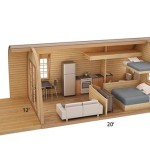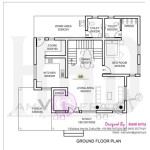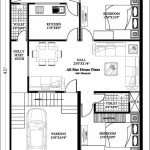Essential Aspects of a Simple Electrical Floor Plan
An electrical floor plan is a scaled drawing that depicts the location of electrical components within a building or space. It serves as a crucial tool for electrical contractors, architects, and homeowners, providing a visual representation of the electrical system's layout. Creating a simple electrical floor plan involves several essential aspects that ensure clarity and accuracy in electrical installations.
1. Determine the Scope and Purpose: Before starting, clearly define the purpose and scope of the electrical floor plan. This includes identifying the type of building or space, the intended use of electrical components, and the level of detail required.
2. Gather Building Dimensions and Information: Obtain accurate measurements of the building or space, including the length, width, and height of each room. Also, gather information about the existing electrical system, light fixtures, and outlets.
3. Use Accurate Symbols and Legend: Utilize standardized electrical symbols and legends to represent different electrical components. This ensures universal understanding and consistency in the plan.
4. Layout Electrical Components: Mark the locations of electrical components like outlets, switches, light fixtures, and electrical panels. Consider the intended use of the space and the placement of furniture and appliances when determining the optimal placement of electrical components.
5. Plan Lighting Circuits: Divide the building into lighting circuits, ensuring that each circuit has a limited number of light fixtures. This helps prevent circuit overloads and improves maintenance.
6. Designate Electrical Panels: Indicate the location of electrical panels, which house circuit breakers or fuses. Clearly label each circuit and its corresponding area of the building.
7. Include Conduit and Wiring: Show the pathways of electrical conduits and wiring within the building. This provides contractors with a clear understanding of how electrical components are interconnected.
8. Follow Building Codes and Standards: Ensure that the electrical floor plan complies with local building codes and electrical standards. This is crucial for the safety and functionality of the electrical system.
9. Review and Revisions: Once the electrical floor plan is complete, carefully review it for accuracy and completeness. Seek feedback from electrical contractors or architects to identify potential errors or areas for improvement.
In conclusion, creating a simple electrical floor plan is essential for safe and efficient electrical installations. By following these essential aspects, you can create a clear and informative document that serves as a valuable guide for electrical contractors and ensures the proper functioning of the electrical system.
Create An Electrical Plan Roomsketcher Help Center

How To Draw An Electrical Plan With Roomsketcher

Electrical Plan Example House App Layout

Electrical Plan 101 Know Basics Of Edrawmax

Easy To Use Floor Plan Drawing

House Electrical Plan Diagram Symbols

Electrical Plan 101 Know Basics Of Edrawmax

Electrical Drawing Blueprints Plan Layout Floor

Electrical Plan Layout Floor Drawing

Electrical Plan Examples And Templates To Kick Start Your Project








